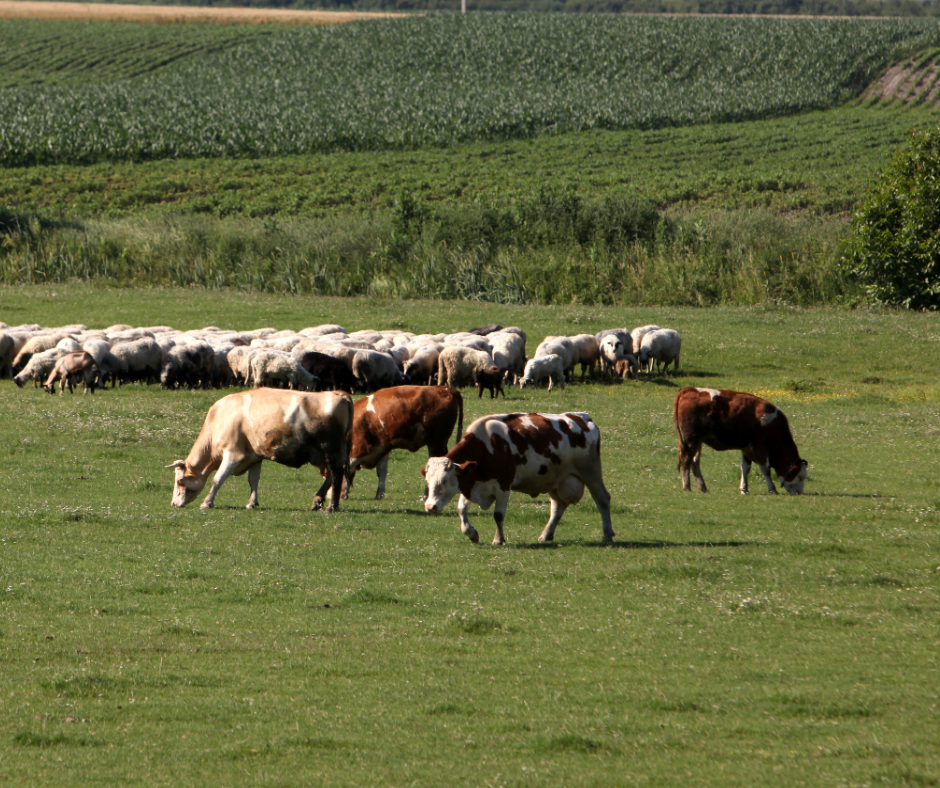This month we are looking at the role livestock traceability plays when it comes to protecting and supporting a sustainable farming system to underpin the growing demand on the food supply chain.
Having a reliable and sustainable food supply chain is one of the biggest challenges facing the UK right now due to growing population, changing climate patterns, and the need for more sustainable farming practices.
By 2050, global food production must increase by approximately 70% to meet the demands of a projected 9.7 billion people (FAO, 2017). With intensive farming practices becoming more common in order to meet demand, there’s an expected increase in the prevalence of livestock diseases (Doody, 2020). This trend necessitates proactive health management and disease control measures in agricultural practices.
Sustainability is more than just an approach which results in environmental benefits, it refers to the ability to maintain or support a process continuously over time. When it comes to building a sustainable food supply chain, there are four factors to consider: environmental, social, economic, and legal responsibilities. Livestock traceability can influence all four of these factors, and therefore is a critical component of sustainable agriculture for several reasons:
- Environmental Impact Monitoring: Traceability systems can be used to monitor and manage the environmental impact of livestock production, by tracking the resources used throughout an animal’s life. This can help in implementing more sustainable practices and reducing the carbon footprint of livestock production.
- Social Responsibility for Disease Control: Traceability allows for rapid response in case of disease outbreaks. By knowing the history and location of an animal, health officials can quickly isolate and manage incidents, helping to reduce the spread of disease and minimise the impact on the livestock population.
- Economic Impact: Farmers can use traceability data to make more informed decisions about breeding, health management, and nutrition, all of which can improve the efficiency and sustainability of their operations helping to streamline their costs. Enhanced traceability can also streamline supply chains, making them more efficient by reducing waste, improving logistics, and potentially leading to cost savings.
- Legal Responsibility for Food Safety: Traceability provides a way to track and manage the food supply chain, ensuring that products coming from livestock are safe for consumption. For example, if a problem is identified in a batch of meat, traceability systems can identify where the product came from, which animals were involved, and where they were processed. Many consumers and international markets demand transparency in the food production process. Traceability can help meet these demands, thereby maintaining market access and consumer trust in agricultural products.
In essence, livestock traceability ensures that livestock production is accountable, transparent, and can be managed for the betterment of the environment, the economy, and society as a whole. Technology in the agriculture sector is a major component in the development of this work to build resilience by digitising and enhancing the accuracy of livestock movement records. Reporting livestock movements by paper forms can take up to 28 days to be received and processed, whereas a movement reported digitally results in the availability of close to real time movement data.
The Livestock Information Service (LIS) has been developed for livestock keepers and those in the supply chain including markets and abattoirs to digitally report livestock movements. It has the potential to deliver on all of the benefits mentioned above. The service is free and easy to use and is both highly efficient and more sustainable when compared with paper recording.
The service currently supports sheep, goat and deer movements, and development is underway to onboard cattle and pig movement data onto LIS too. This will provide a dynamic, multispecies, livestock traceability platform to track livestock movements and accompanying data.
To stay up to date with our latest activity, follow us on Twitter, Facebook or Instagram.




